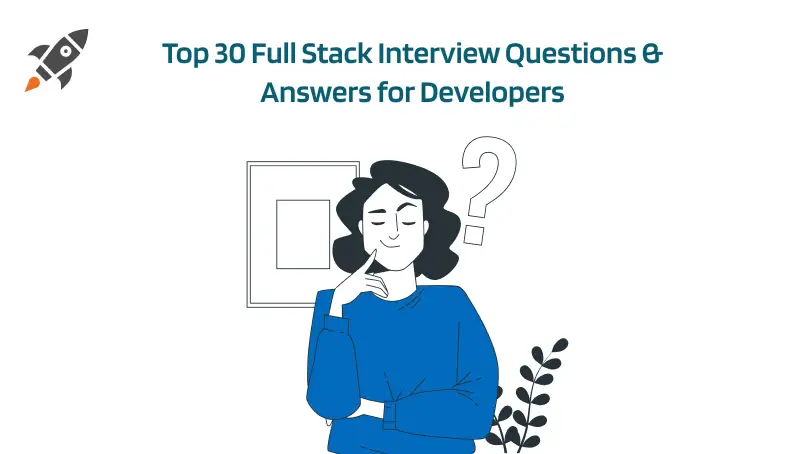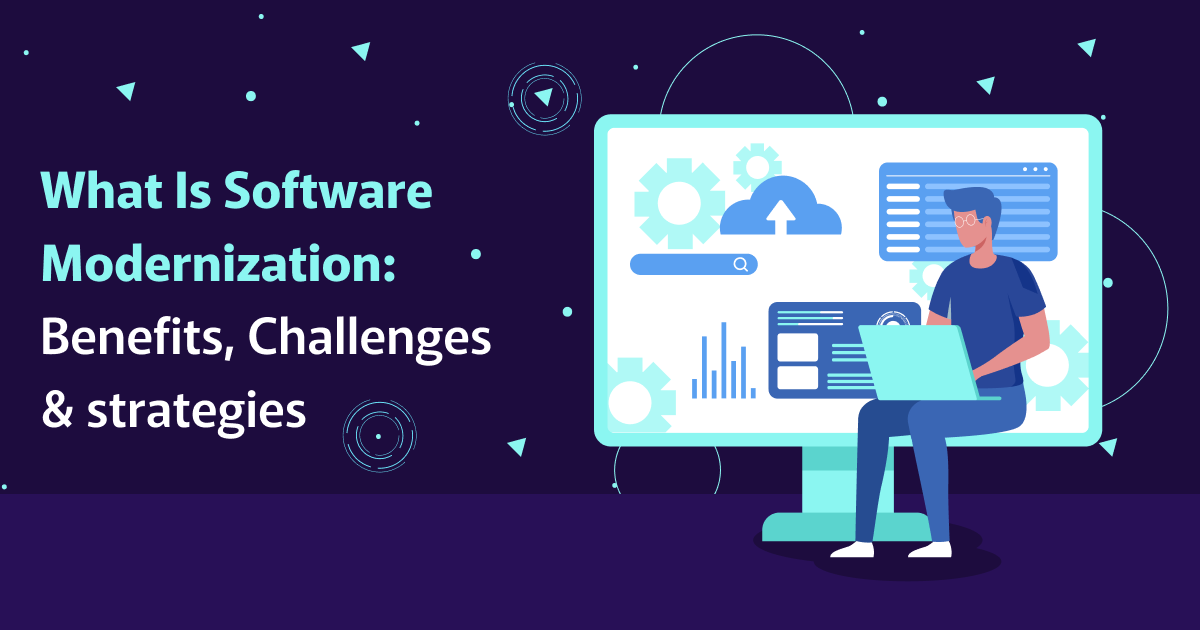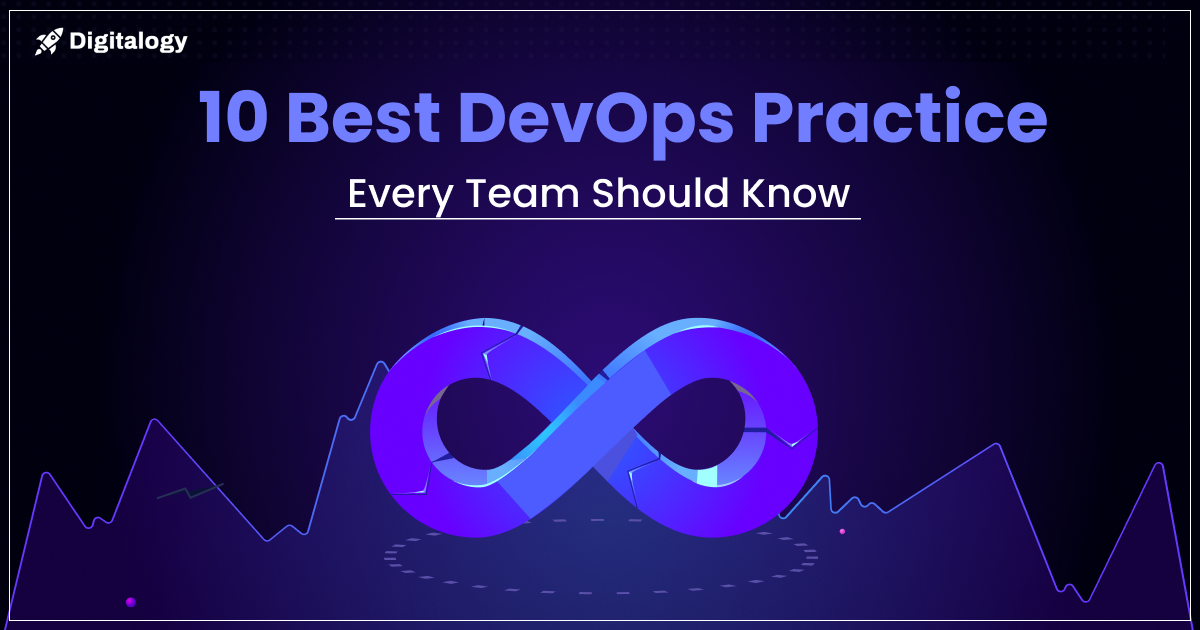Technology development has opened up many opportunities for hiring in advanced roles for people. The development of programs and modules takes more than just one technology. In fact, companies are investing in a full stack of technologies for program development. Companies are hiring expert full-stack developers to navigate these full stacks of program development technologies.
The role of a full-stack developer can be challenging and rewarding. Full-stack developers are preferred as part of the workforce because these developers have command over multiple programming languages and skills. A skillful addition to the workforce is necessary for the proper functioning of a company.
Also read: Top Python Interview Questions And Answers For Freshers
Skills of a Full Stack Developer
Full-stack developer depends on the full extent of full-stack technology, which is the complete depth of a computer system application. A full-stack web developer has the skills to develop both the client and server end of a computer application. The front end includes the side visible to the client, and the back end includes the side that works as a framework for the front end.
1. Front-end languages and frameworks
Front-end languages and frameworks like HTML and CSS are skills and capabilities required for you as a full-stack developer. These capabilities help you reach out to style and visual representation abilities on the website you develop.
2. Back-end technologies
The Full Stack developer has to get a hold of back-end technologies and skills. Full-stack development is not complete without the help of back-end technologies. Javascript and Java, Python, and C# are languages and capabilities you need under your belt for the full-stack developer role.
3. Database management
The full-stack developer should also possess skills in database management systems and other areas of relational mapping you need for the website. You need a proper understanding of MySQL, SQL SERVER and MongoDB etc., to be good at full-stack website development and other programs.
4. Version control systems
Full-stack developers also need to develop skills in version control systems. Version control systems help keep track of the other developments on the project and have a record of the different changes that have come up with the development process. The version control systems help track the whole portal’s history. For a transparent development process, knowledge of version control systems and other assisting systems of the project.
5. Web hosting platforms
You also need a proper understanding of web hosting platforms that help deploy the project on a wide scale so that the end users can access the website and use it for its purpose. There are many web hosting platforms, and you need a thorough understanding and grasp of multiple web hosting platforms for the success of the project you develop.
6. Communication skills
The full-stack developer needs technical skills, communication, and leadership skills that help direct the whole project toward success. A good full-stack developer would need to lead a team of developers and other professionals toward a project’s full-scale development and deployment. Therefore, the full-stack developer needs to work in the space of multiple soft skills for the success of the project he takes up.
Interview Questions for Beginners in Full-stack Development
1. What technologies and languages would you need to develop a project from ground zero?
A full-stack developer needs multiple skills and capabilities to develop a project from scratch. For example, he needs proper command over numerous popular programming languages and front-end and back-end technologies. You also need good control over databases and frameworks to properly develop a project. The full-stack developer also needs a proper handle on design capabilities. The developer should also know how to handle the server side of operations. The developer has to combine all these abilities to develop a full-stack project.
2. Which programming language is the most preferred by full-stack developers?
There are multiple programming languages that developers use today. Therefore, there is not one single language that the developer should be very proficient in. The programmer should be well-versed in multiple programming languages. For example, you need to know more about Python, Ruby, PHP and C++ etc. The developer has to be very proficient in more than one programming language.
3. How do you explain pair programming?
In pair programming, two programmers share one machine and create codes for the project. One of the programmers acts as a driver who creates the code. On the other hand, the other programmer operates as a navigator, helps monitor the process, and reduces error. The observer proofreads and corrects the whole code for better results. The observer or navigator also decides the coding direction and the entire project. The pair can switch their roles at any time.
4. What is CORS?
CORS is nothing but cross-origin resource sharing. The CORS is a mechanism in which the webpage of one source has access to other resources for better performance. The website accesses resources from other domains so that the webpage works better than other web pages. The webpage interacts with other resources from different domains and runs with the most optimized resources.
5. What is callback hell?
Callback Hell, or the pyramid of doom, is an anti-pattern seen in asynchronous programming codes. It is a situation where you have multiple asynchronous functions and nested if statements or functions.
What is long polling?
Long polling is a web development technique used to push information or data from the servers toward clients quickly. The extended polling technique allows the connection to last when a request is made from the client to the server. Long polling maintains the connection until the particular information is ready to be sent to the client from the server.
6. What are the latest trends of full stack development that you know about?
New trends emerge in the area of full-stack development very quickly. Many trends that are noteworthy when it comes to full-stack development. For example, the rise of multiple programming libraries like ReactJS and VueJS. On the other hand, there is a trend of progressive web apps, real-time web apps and mobile web app development. There are also many enhancements to JavaScript, which benefits programming for websites and web apps. These web app development trends and capability enhancements help create websites and apps that are very popular and efficient.
7. What is the difference between GraphQL and REST?
REST is representational state transfer, and it comes in handy in designing and developing APIs with the help of architectural patterns. The popularity of GraphQL, however, is also very high and can challenge the popularity of REST over other platforms. The purpose of the two platforms is the same, as they aim at transferring data over the internet. However, there are some differences too. GraphQL is a query language for APIs. Rest is an architectural designer of the APIs that use GraphQL. GraphQL is known for its predictability.
On the other hand, REST depends on the HTTP and URI methods. GraphQL only supports JSON format. On the other hand, REST supports formats from XML, YAML, JSON, and HTML.
8. What is continuous integration?
Continuous integration is integrating and implementing code changes in a particular project. The code changes are introduced into a central repository where automated tests and builds can be run. The automated tools run the code and check for errors before integration. The CI process is supported by the tools of the source code version system.
9. What is multithreading?
Multithreading is the process by which multiple threads are executed in a process. A thread is the independent part of a process or unit, and multiple threads are integrated for the success of the process. Multithreading helps the application in taking up multitasking in processes.
Also read: List Of The Top 25 Node.JS Interview Questions And Answers
10 Questions for Medium-Level Full Stack Developers at Interviews
1.What do full-stack developers do?
The full-stack developer develops a digital product’s client and server side. The development can happen for a website or a web app. The full-stack developers take up programming in HTML and CSS languages. Moreover, they know how to program databases, browsers and servers so that the project they are creating works to its best capacity. Companies look for full-stack developers because they can create a product for commercialization from scratch.
2. Name a few full-stack developer tools that you use for project development
There are many tools that a full-stack developer can use for the whole process of project development. The tools are as follows-
Backbone, Visual Studio code, WebStorm, Slack, and Electron.
The few full-stack developer tools you should look at for different capabilities include TypeScript, Codepen, and GitHub. The area of full stack development is fast developing, and new tools keep emerging from time to time.
3. What is the inversion of control?
Inversion of Control is a broad term used by programmers and developers to decouple the components and layers of the system. The overall process is done with the help of object-oriented programming. Control of objects or portions of programming is transferred to a framework with the help of inversion of control.
4. Explain the pros and cons of using ‘Use Strict.’
There are benefits and drawbacks to using Use Strict in the programming process. The strict mode allows you to run a program with a strict operating context. When the strict use command is used, the browser switches to a strict mode for the operation, which is far safer than the usual JavaScript framework. The strict mode makes the errors apparent and the whole code accurate and transparent for better monitoring.
5. What are some of the uses of Docker?
Docker is a platform where you can isolate your applications and deliver them quickly after checking the code. Developers can use Docker to package programs into containers and run them efficiently to deliver them quickly. These containers have everything required to run the whole code package and can run in any environment. Docker is used to test and run programs from anywhere.
6. Explain the event loop on Node.js.
The Event Loop in Node.js can take up asynchronous programming for the project. With JavaScript, every operation takes place on the same thread. But, the smart data structure with an Event loop can create the illusion of multithreading. An event loop simplifies the process of asynchronous programming. This happens because an asynchronous set of functions is relayed from the main thread to other threads easily, and the multithreading and run of the program continue.
7. How can you reduce the load time of a web application?
Customers and companies are looking for a way to create quick-load applications. There are several ways by which you reduce the load time of the web application. For example, you can go for image optimization, reduce redirects, and keep JavaScript and CSS in external files. You can also minify HTML, CSS and JavaScript to optimize loaded files.
8. Explain dependency injection
Dependency injection is a design pattern implemented to apply the inversion of control on the programming framework. These patterns can be created out of the classes and provided to different classes in many ways.
9. What do you mean by observer pattern?
The observer pattern is used when several objects in the programming framework are tied in a one-to-many relationship. The pattern is used when one of the objects in the system is modified, and automatically, other objects connected to it are modified and notified.
10. What is the difference between blue/green deployment and rolling deployment?
The two types of deployment strategies are used to put programs to use for a project. The blue/green deployment scheme creates two separate infrastructure environments, the blue and the green. The blue one contains the older code version, and the red one has the newer version. At any given time, there is only a single live production environment. The rolling deployment strategy completely replaces the infrastructure of the old code so that the new code can be run. The new code infrastructure rolls out and replaces the old infrastructure.
Also read: Things To Consider Before Hiring Angular Developers
Questions for Advanced Level Full Stack Developer’s Interview
1. What is referential transparency in functional programming?
In functional programming, referential programming is the differentiating factor of the code run in the infrastructure. The code is referentially transparent when it can be replaced or substituted with the corresponding values that it computes. The computation should be without altering the base result.
2. What is normalization?
Normalization is a process of altering the structure of the database. The process removes redundant data from the database and stores non-redundant, relevant data. The process reduces the occurrence of duplicate data and maintains original, non-repetitive, useful data.
3. What is denormalization?
The process of denormalization includes the process of combining data from multiple tables so that you can query them quickly. The aim of denormalization is a process of expediting the query so that you can fulfil the query in a faster manner.
4. In Java, what is a connection leak?
If a connection is opened in the Java code and not used, it leads to a leak. When the connection is no longer available for reuse, the leak manifests. These leaks occur when the database requests are not executed and closed correctly. When these connections are not properly committed, the whole thing shuts down and permanently closes.
5. What is a promise, and what are its states?
The Promise in the entire stack development process is an alternative to call-back functions that manage asynchronous coding operations. Promises have better error handling over callback functions. The Promise function has three states; one is pending, rejected or fulfilled.
6. State the purpose of GET
GET is one of the HTTP request methods. The purpose of GET is to request data from a particular source. Once the data is accessed, everyone can see the data in the URL.
7. What is POST?
POST sends or writes data and then processes it to a specific resource. POST is safer than GET as a request process and does not display the information at the URL.
8. Explain RESTful API.
APIs that conform to the design framework of REST is Restful APIs. Restful APIs are used to create requests and access information from various sources. REST API maps data from a cloud platform to other page sources.
9. How to stop a bot from scraping data from the publicly accessible API?
If the information is accessible to the public via the API, it is impossible to stop the bot from scraping the site. You can still minimize bot activity by throttling and rare limiting.
10. Tell me about a recent project you developed and why did you choose that particular project?
When the interviewer asks this question, he wants you to share your personal experience and what drives you to work the way you do. He also wants to hear about the practical applications of technology and skills you have used in previous projects. This shows him what you are capable of and what kind of a worker you will be. When answering the question, lean back on your experience and keep it specific to a project.
Also read: How To Hire Remote Developers In 2022?
Conclusion
The full-stack developer role is a very coveted position for a professional. It takes a lot of skill and capability to aim for the job of a full-stack developer. When sitting for the interview, ensure you are confident and can convince the interviewer that you can handle both the front and back end of the application development.
Whether you are a beginner in development, a professional, or an expert, there is always something new to absorb in this field. It is always better to go to the interview prepared and confident. The above questions are designed to help you prepare in the best way possible.







